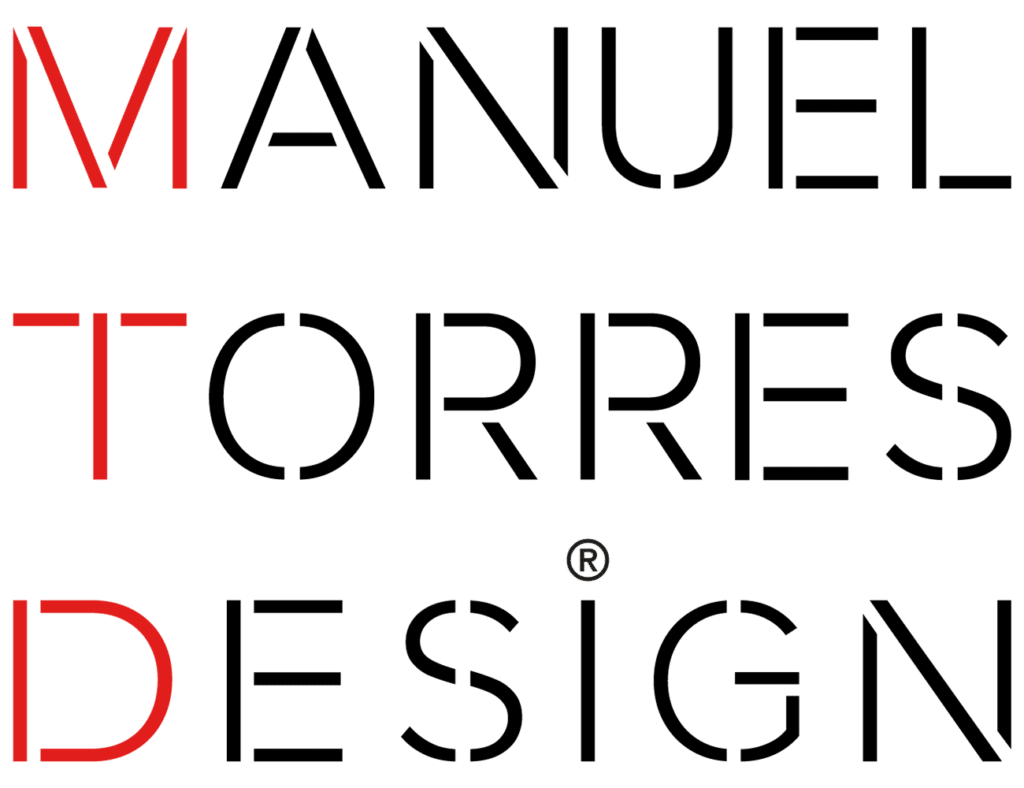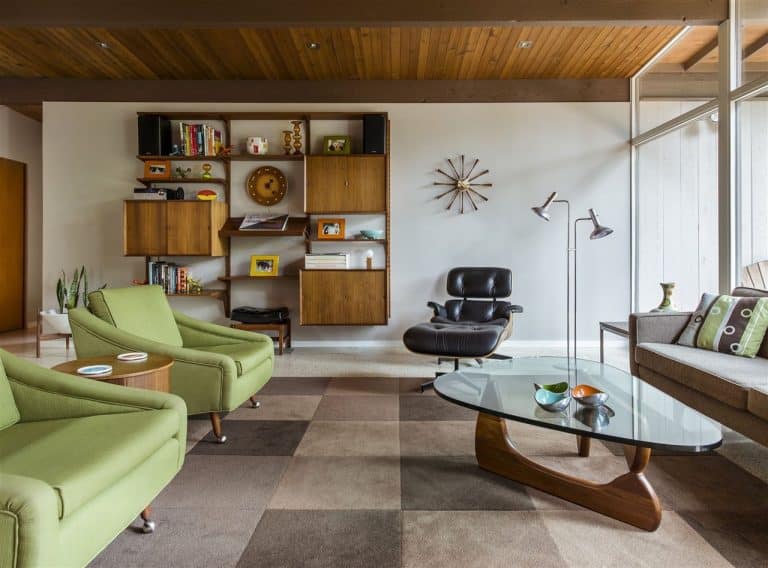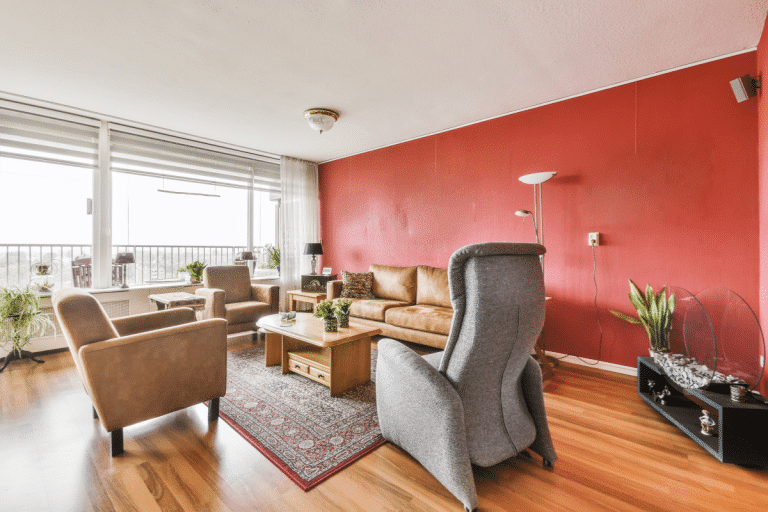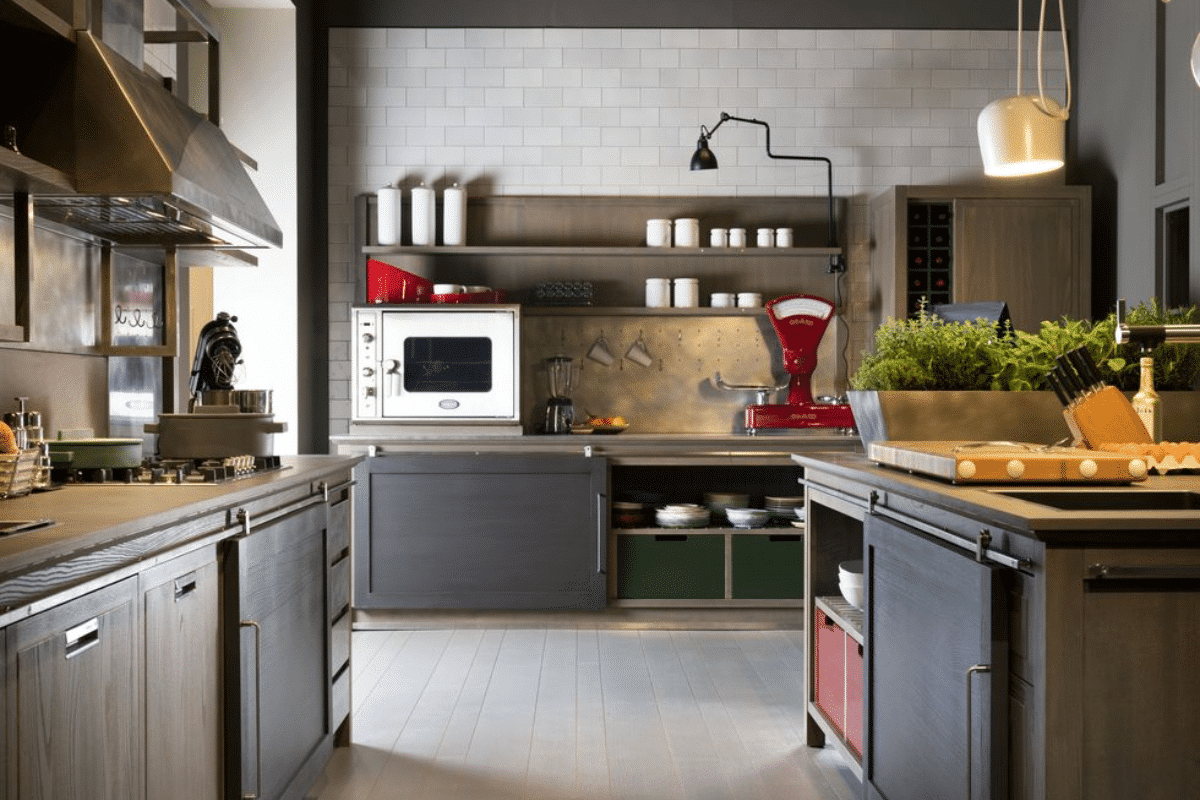This style employs a palette of neutral colors (white, gray, beige…) as a base, to which touches of color can be added, always within earth tones. As you can see, not even the colors are particularly striking; rather, they seem to try to blend in. If we want to add a stronger color, it’s usually done in small amounts (the most popular being shades of orange or yellow).

Furniture
As we’ve briefly mentioned, this style stands out by not standing out at all; simplicity and functionality are its most powerful tools when it comes to attracting attention as a decorative style. It doesn’t even bother to make things complicated; instead, it aims and strives for furniture to be as natural as possible. In terms of its shape, horizontal and fluidity must be ensured, hence they often feature clean lines and straight strokes.
Any kind of overloaded patterns are avoided (which is why geometry is often used, as we’ll see later) in favor of straight lines and clean finishes. Together with the color palette used, the style overall conveys harmony and beauty within its simplicity. We mustn’t lose sight of the reasons behind the birth of this style, so the industrial influence, which ensures every piece of furniture has a function, will also always be very present.

Geometric Patterns
Since the Mid Century style avoids any kind of overloaded or exaggerated patterns, it often employs geometric figures in its decoration (furniture, wallpaper, upholstery, painting, etc.) when necessary. This choice is not random: geometric patterns were very popular in the mid-century. However, we don’t recommend using them indiscriminately or excessively, as even though they are not very flashy, they can still saturate the space, something that Mid Century style completely avoids.
Materials
The most commonly used materials, influenced by the industrial era in which the style was born, are predominantly metals such as brass, especially in lamps and other objects in the rooms. It brings a very retro aesthetic, creating an attractive and vintage focal point.
However, the clear protagonist, when it comes to materials, is wood. Keep in mind that there’s always a desire for a connection with nature, so what better material to evoke nature than wood?

Space
The importance of the exterior, even when decorating an interior, is overwhelming: natural light is always sought to be present in the rooms, and the view outside the home is always visible. Gardens are often integrated into the living room or dining room, eliminating the division between ‘inside and outside’. This also blurs the lines between spaces.
Remember that light will always be the best form of decoration for the Mid Century style, as it brings life to the space and allows for a better view of the exterior. Give it the importance it deserves and avoid using very opaque or heavy curtains; nature is also part of interior design.
Exposed Structure
Simplicity taken to the extreme: no decoration is decoration. Often, we find that walls are left with exposed brick, wooden beams are left visible, and metal pillars are used as decoration themselves. For Mid Century, the architecture and structure of the building are considered beautiful and do not need to be hidden. This aspect of the trend has actually carved out its own niche, and nowadays many people choose not to cover up beams or internal structures. As you can see, we owe a lot to the architecture and designs of that era.

What is Mid Century Style?
If you haven’t yet placed this type of interior decoration, we’ll give you a reference point: the Mad Men series (2015) is the best representation of this style, if not the standard-bearer that opened the door to the return of this trend. However, this style has been around for a long time, specifically since the 1950s to 1970s.
Its mid-20th-century inspiration gives it the name Mid Century. It is based on the architectural designs of the homes created after World War II, a dark period that people wanted to forget. That’s why these constructions place a lot of importance on natural light and bringing the outside, nature, into our homes. The need to accommodate thousands of soldiers, and their families, returning from the war, created a trend for these houses to be primarily organized in modules.
It was hugely successful in Scandinavian countries, where there was a growing emphasis on technological, functional, and economical design. In fact, we can find many references of Mid Century style in Scandinavian or Nordic design. But not only in Northern Europe, for decades this trend was in vogue and in the spotlight of most designers, as it focused on naturalness, one of the main ideas of this trend.
Manuel Torres Design
Are you ready to give your home a change of perspective? Are you looking for simplicity and functionality? Mid Century style might be what you’re looking for. However, we’re aware that completely changing the decoration of your home and choosing the right one isn’t an easy task. That’s where we come in: at Manuel Torres Design, we carry out your project by anticipating your needs and offering you the best result. Our way of working is based on maximizing space, always paying attention to the smallest detail.
We offer comprehensive service with the highest quality, maximizing available resources and minimizing time in project execution. If you have any doubts about the style you prefer or don’t know where to take the interior design of your home, you can contact us. Our team will assist you at all times so that, together, we can find your ideal space, tailored to your style and needs.






